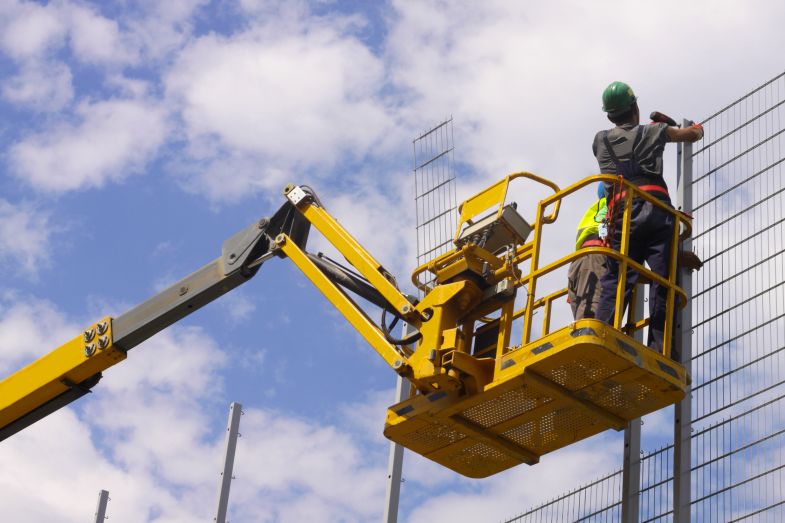
The construction industry uses various tools, gear, and equipment to complete complex building projects in multiple regions. An aerial lift is one such indispensable tool that can help workers reach and finish work on greater heights. In simple terms, it is a powered mobile platform that people use to work on elevated heights.
However, beginners should know about the essential safety protocols, correct operation techniques, and adequate fall protection for aerial lifts to use the equipment safely. It can prevent injuries, falls, and other untoward incidents at the worksite, ensuring the security of the operators and other workers.
The following information can be incredibly beneficial for those hoping to learn more about this exciting piece of machinery and operate it in the future.
Types of Lifts
The multi-billion-dollar aerial work platform market is growing by the day, with an increasing number of businesses opting for strong lifts to complete complex work on great heights. But the fact most people remain unaware of is that there is more than just one variety of this lift.
So, depending on the work requirement, people generally choose from the following list of lift variants for their construction projects.
Boom Lifts – These are perhaps the most commonly used vehicles, enabling operators to raise and move the platforms in various directions as per the requirements.
Scissor Lifts – These platforms are normally used to work on low or medium heights, leveraging on a criss-cross arrangement that extends as the platform is raised.
Cherry Pickers – A variant of the boom lift, this vehicle is commonly used by farmers to pick ripe fruits off of tall trees. The device is pretty flexible, enabling users to pluck the eatables without causing any damage to the trees in any way.
Motor-based Vehicles – These are self-driven lifts that need extra stabilizers to work, but the self-propelled lift drives itself around the worksite. Finally, there is a no-motor lift that relies on an external force to work efficiently.
Fall Protection is a Must
Adequate fall protection for aerial lifts that comply with OSHA standards is an absolute necessity as it ensures worker safety during operation. Beginners should know that there is a vast range of protective gear and equipment one must set up before driving the vehicle.
For starters, consider the following types of fall protection and prevention measures necessary when operating daunting aerial lifts.
- Guardrails – Robust guardrails are especially essential when working on raised platforms as they prevent people from accidentally falling off. Although OSHA does not mandate these rails on scissor lifts, it is still prudent to install them as an added safety layer, especially when amateurs learn to work with the equipment.
- Restraint and Arrest Systems – Systems like a lanyard or a strong belt prevent workers from falling off the edges of the platform by restraining them after reaching a point. In contrast, arrest safety gear prevents personnel from hitting the surface below after a sudden fall. In short, it arrests your fall effectively. Arrest fall protection is mandatory when working on platforms raised above three meters or stationed over a pit and similar hazardous crevice.
- Safety Harness and Other Wearables – Wearing a body harness tethered to the bucket is essential when working on an aerial lift. The harness can restrain or arrest a fall efficiently, depending on the mechanism. Other wearables like an RFID tag, smart boots, or sensor clips can be worn by the person to indicate a sudden fall or the chance of one, to the supervisors on site.
- Control Zone – Control zones are requisite on sites where fall protection systems may not work. Typically, a warning line is set up around two meters from the work site, warning everyone around the unguarded edges and surroundings.
Training and Certification are Essential
One must never make the terrible mistake of allowing untrained workers to operate any lift, as it could spell disaster for the driver and everyone else around. The worker may drive the machinery on uneven surfaces or with the platform raised high above the ground, causing the personnel on the lift to slip or fall off and severely injure themselves inadvertently. Else, they may take the equipment too close to live power lines and risk electrocution.
Therefore, it is critical to enroll your workers in a reliable and trustworthy training program that complies with OSHA guidelines. Ideally, you should find reputable training resources that enable personnel to take the course remotely over the internet, saving them time, effort, and money. Also, comprehensive training modules can help trainees pick up techniques and safety protocols quickly, making them adept at using these complex vehicles in a short time.
So, look for a high-quality aerial lift training course that provides legitimate certification once the workers complete the program, making them licensed and fully able to operate the equipment efficiently.
 2018 ·
2018 ·
Leave a Reply